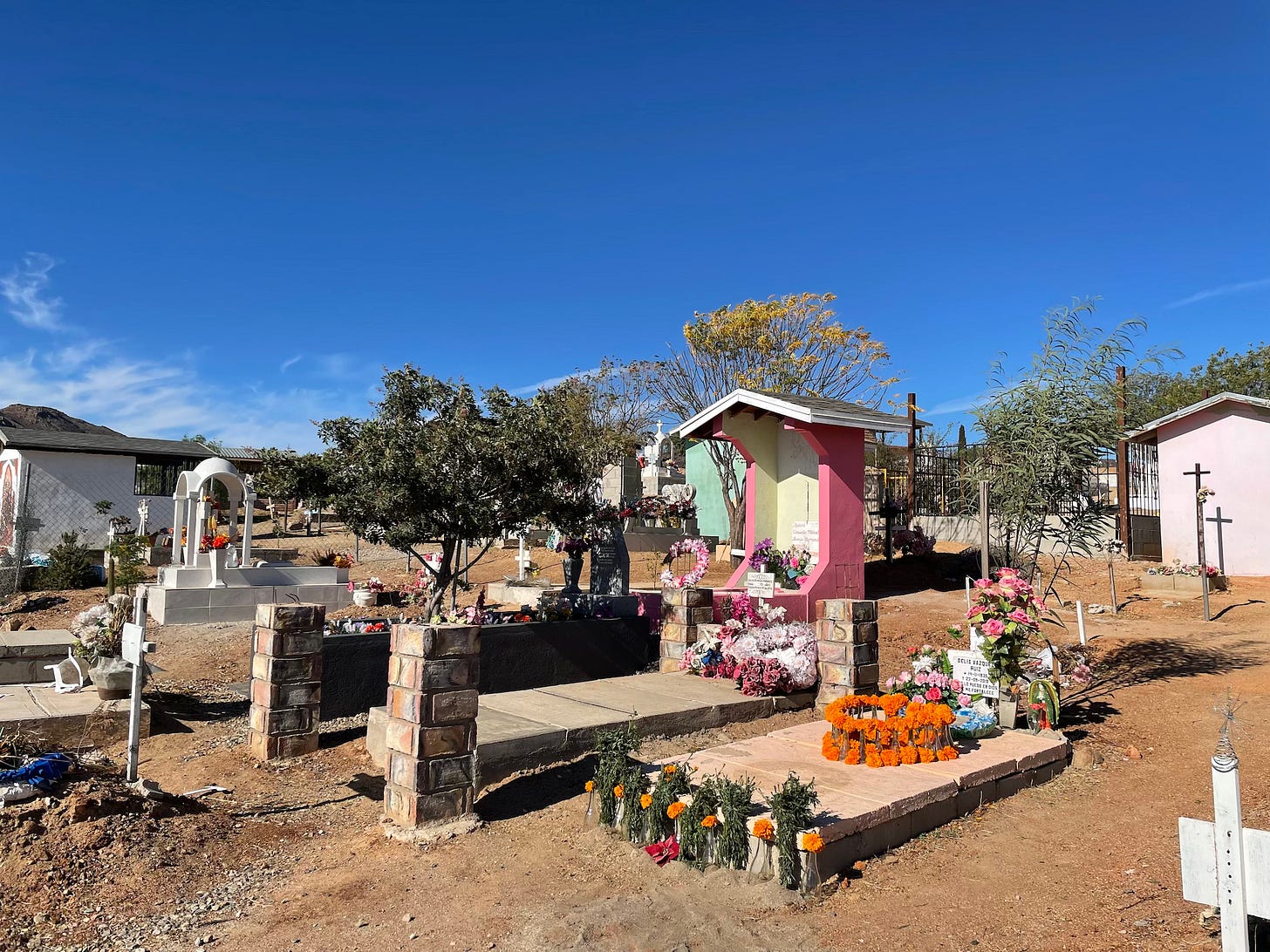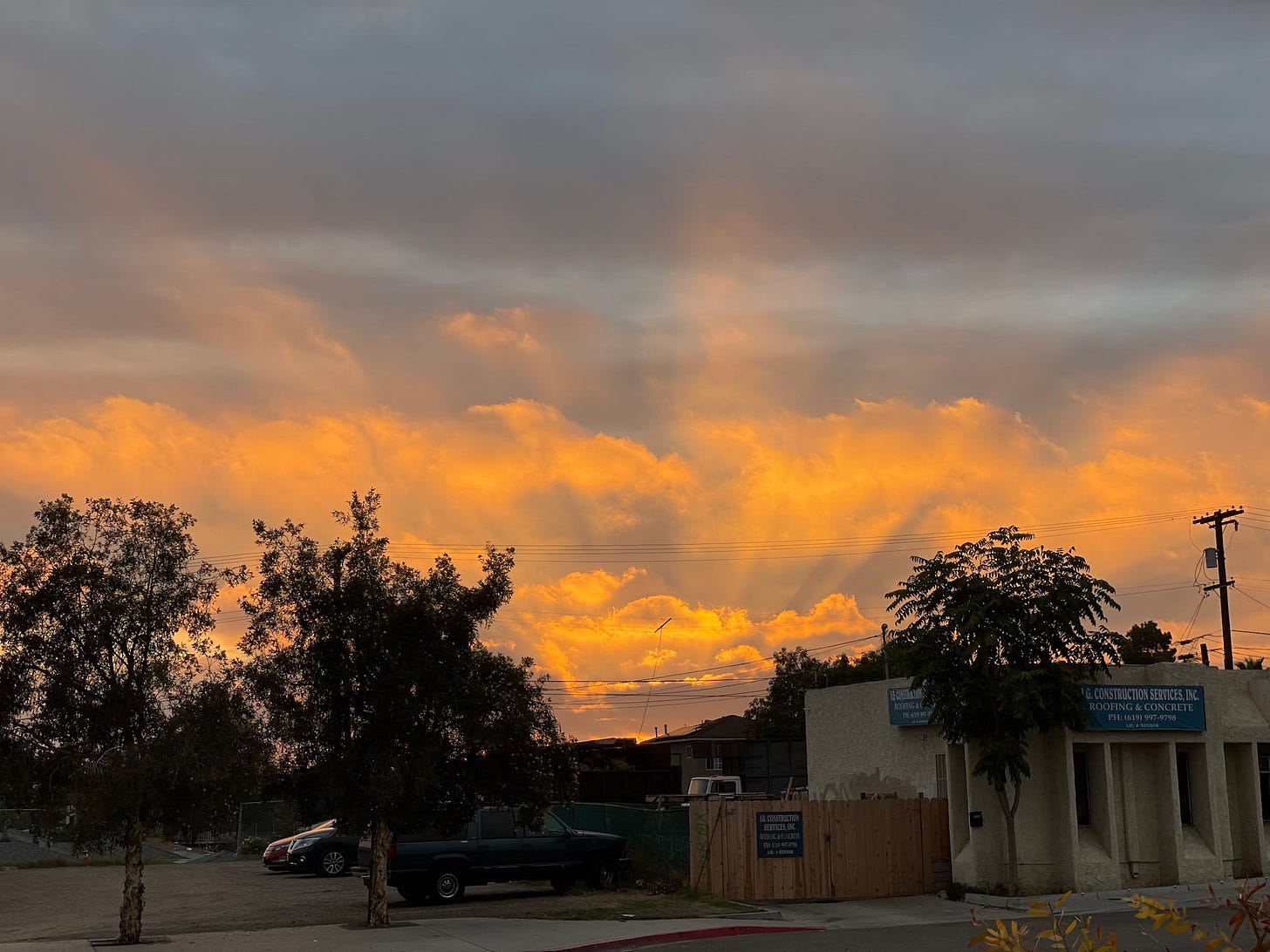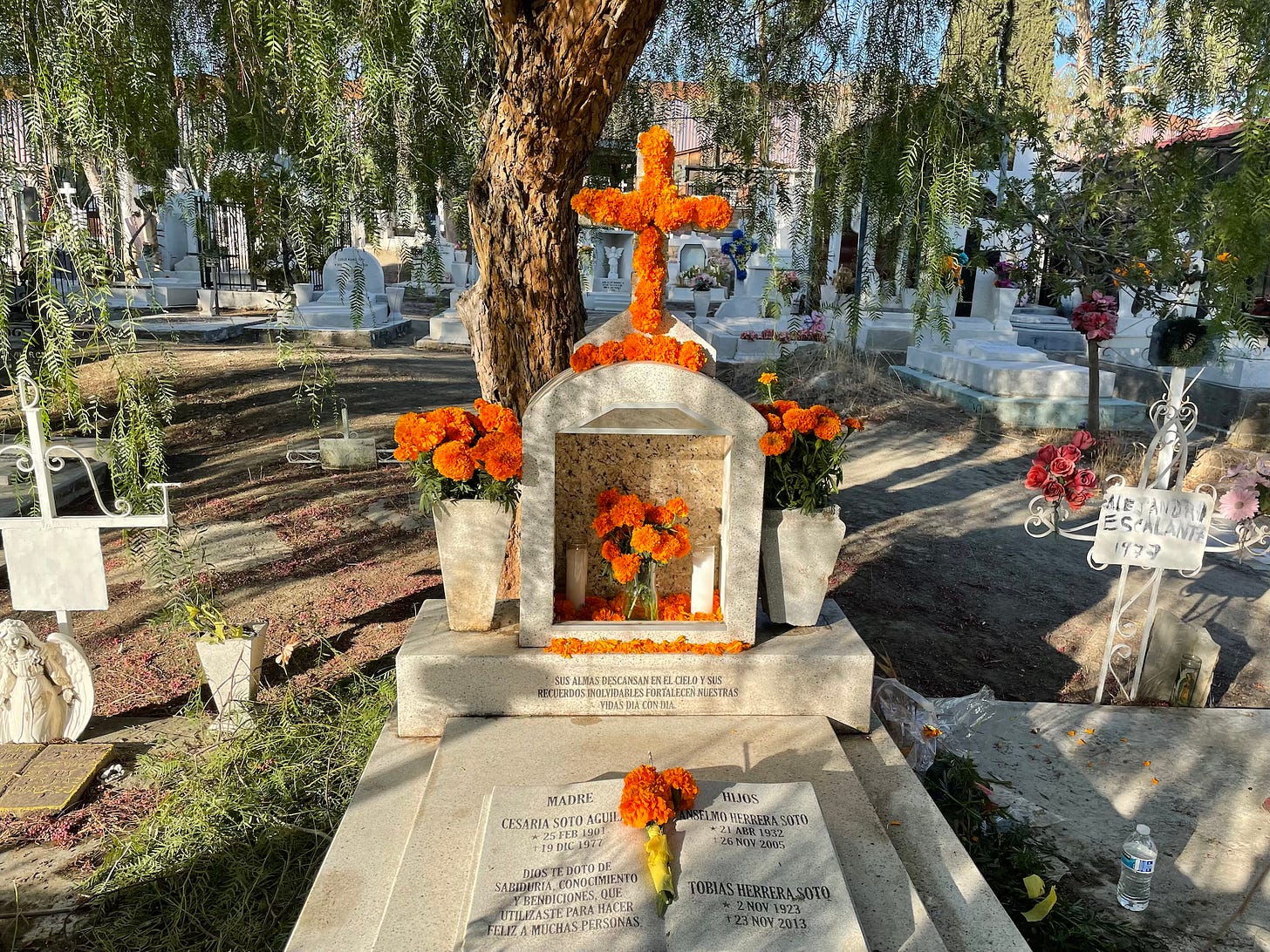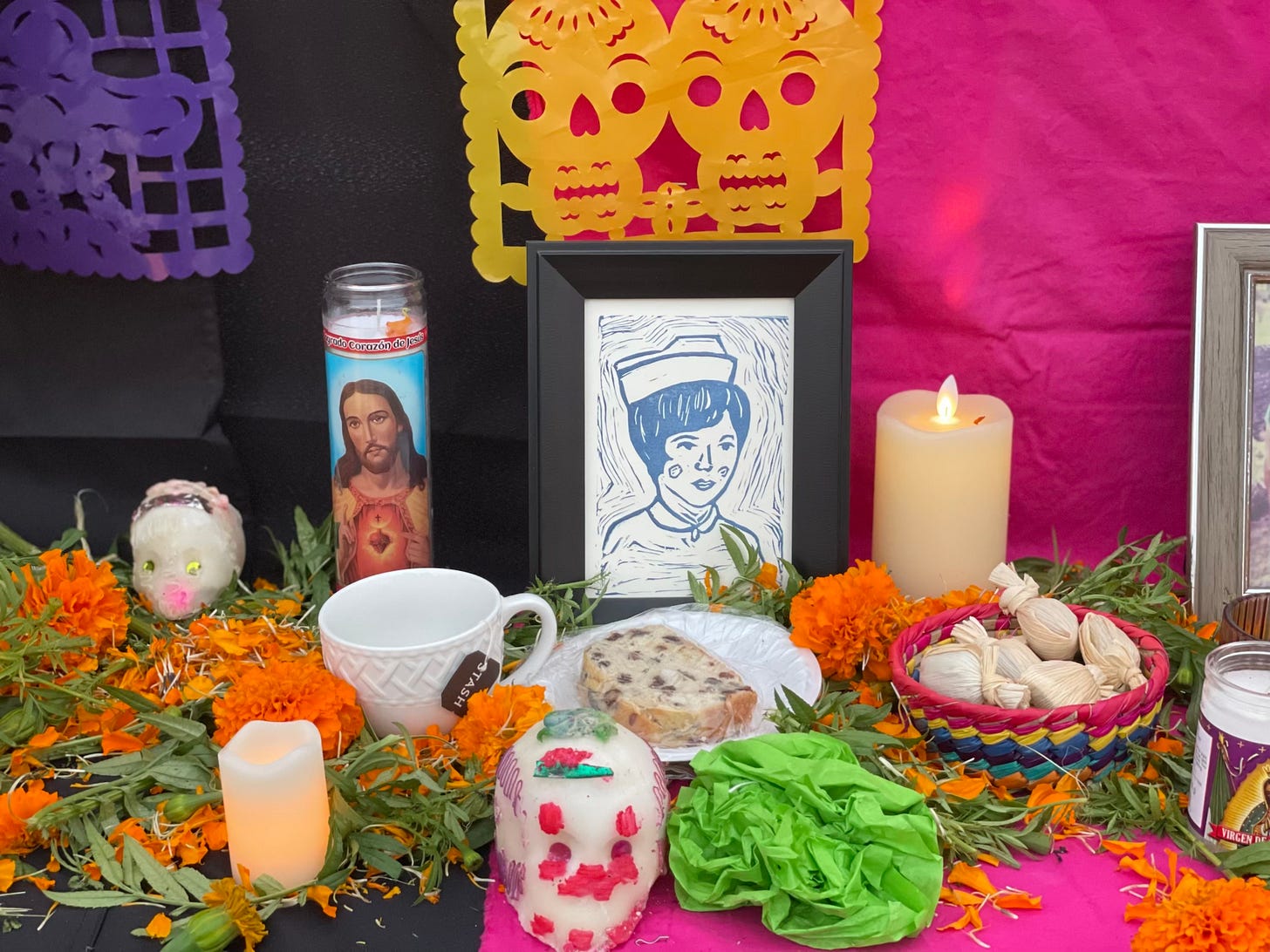During my junior year of college, I realized I had a problem with death. I’d signed up for an honors course called Death and Dying. My school, which had a reputation as a party school, had a freewheeling honors program with all kinds of unusual courses. I took an honors class in economics of all things and during the lectures I filled my notebook with short story ideas. I won’t say that the attitude was “anything goes,” but for my honors thesis, I wrote about the aural dimension of James Joyce’s influence on Jack Kerouac—whatever that means. Nearly every class offered in the honors program was interesting, which is how I ended up taking Death and Dying.
In this course, I explored my relationship with death. I discovered that my very limited experiences followed the distinctly American pattern of making sure the inconvenience and unpleasantness of death was eliminated. Funeral practices had been sanitized to keep the body at a remove and to preserve the dead in a state of so-called eternal rest.
As we read about death in America and shared our experiences I was struck by how the dominant feature of death is deceit, particularly with regards to language, especially when little kids are involved. Kids are told that everything is fine when they can see with their own eyes that everything is not fine. In fact mom and dad are falling apart. But kids are kept out of the circle of grief so as not to upset them. The result of this faulty logic is a lot of confusion about what happened to grandma or grandpa. Where is this better place that they’ve gone to? And if it’s so great why is everyone crying?
Then, a year or two or ten down the road, memories of that loved one are registered as an ache, like the memory of having your house broken into and all your photo albums have been stolen. You know something’s missing, but you’re no longer sure what was lost, and all you know for certain is that you don’t want to go through something like that ever again.
I thought the class was interesting but it didn’t really have an impact on my life. I was in my early twenties, after all. What did death and dying have to do with me?
A few years after I graduated from college, my cousin Mark took his own life. He was very ill, in great mental distress, and the manner of his death was so shocking that it was impossible to sweep my feelings about it under the rug. While suicide produces a lot of confusing feelings and emotions among the survivors, I hung on to the one thing I could be absolutely sure of: my cousin’s suffering was over.
That, however, wasn’t nearly enough. A year later, when memories of my cousin’s illness started to recede, and memories of the time we spent together began to assert themselves, I was flooded with feelings. Because I’d never grieved the loss of this person who meant so much to me, I was bombarded with emotions I wasn’t equipped to deal with. I felt abandoned, deserted, bereft, and I didn’t know how to express any of it.
This pattern continued every time someone I knew (or knew of) completed suicide. I didn’t even have to know the person all that well – or at all. The deaths of famous people would send me into a spiral. I recall being absolutely devasted by the death of Spalding Gray, who took his own life in 2004. I’d seen Gray perform his monologue Monster in a Box, but that was enough to send me in a tailspin as I relived my cousin’s death.
Knowing that the American death industry had poisoned my relationship with death, didn’t make me feel any better. I knew that something inside me was broken, but I didn’t know how to fix it.
That changed with another death. Ten years after my cousin’s passing, Nuvia’s uncle Carlos was murdered in Baja not far from the rancho where he lived in Valle de Guadalupe. He lived next door to Nuvia’s grandfather and his wife Maria. We had been spending a lot of time at the rancho because we were planning our wedding there. We took weekend trips to sample wine, food, and cake; scout musicians; and hire a DJ. All these tasks that would have been anxiety-inducing in the states felt like an adventure because we gave ourselves over to them 90 minutes south of the border. Sometimes we’d walk the dirt road to a nearby winery and Carlos would pass by in his truck, offering us a ride with a big smile on his face because he’d looted our cooler of the cold beer we planned on drinking when we returned to the rancho.
Carlos’s body was placed in a coffin in his father’s house. The room filled with candles and flowers not for aesthetic reasons but out of necessity. Children were brought in to say goodbye. In the kitchen food was prepared and dishes neighbors brought reheated around the clock. Behind the rancho, great quantities of coffee and beer and tequila were consumed by grief-stricken mourners. Whatever you wanted—prayer, stories, jokes, songs—there was a place to gather and mourn. People came from all over Baja and Southern California to participate. No one dressed up for the occasion. There wasn’t a specific time set aside for mourning. People ate and drank and ate again. They came and they felt what they felt and shared those feelings with one another.
The funeral at the church was austere, but during the burial at a hillside cemetery outside Ensenada things got intense. The priest’s words were drowned out by cries of anguish. As Carlos’s family and friends lowered him into the ground with rough rope wrapped around the coffin, the weeping and wailing escalated. Carlos’s poor mother had to be comforted and restrained out of fear that she might literally follow her son into the grave. Flowers were tossed on the coffin and then his friends took turns shoveling in the dirt. Musicians played their instruments, bottles were passed around, and the feeling of grief that descended on the community of mourners felt as real as the clouds of dust that rose from the grave.
Rituals help us process intense emotions. They guide is through difficult times and prop us up when we’re overwrought. But in American culture, too often our rituals replace emotion. They provide a timetable, a schedule of events during which we compel ourselves to hold it together. It allows us to walk zombie-like through ceremonies without feeling a thing, avoiding complicated emotions by repeating tired phrases without reflecting on what they really mean. Grief cliches like “They’re in a better place now,” which, depending on the circumstances, can be outrageously offensive.
What is it about our culture that makes us incapable of feeling what we feel? We do this during happy occasions as well. You can’t announce an engagement without being bombarded with questions about the wedding date. Anyone who has ever been pregnant knows that to tell people they are with child is to invite inquiries about the sex of the child, the due date, even the name. Can’t we just sit with news for one fucking second? Why are we like this?
After Carlos’s burial, I felt the uncomplicated sadness of having mourned. This was a new feeling for me. This wasn’t just my writerly imagination latching onto a vividly realized scene (though that was part of it too), I bonded with the family I was marrying into. I felt closer to Carlos’s many relatives and to Nuvia’s immediate family. I felt part of a community that twelve years of Catholic education had prepared me for but had never really provided. When I returned to San Diego, I put off cleaning the shoes I’d worn to Carlos’s burial. The gravedust was a reminder that I’d experienced something real. This was something death had never given me before and I wanted to hold on to it.
Which brings me to Dia de los Muertos. After Nuvia and I were married, I was exposed to this celebration of remembrance. The fact that Nuvia is an artist and introduced me to a large community of her colleagues sped up my education. I didn’t grasp the significance of all the symbols, not right away. As a deeply lapsed Catholic, I was more than a little suspicious of all the religious iconography. But I immediately latched on to the central premise: we nourish the spirits of the dead by keeping their memories alive. As a storyteller, that was something I could get behind.
I was invited to participate in an event for which I wrote something about my cousin Mark. Despite my cousin’s many successes as a screenwriter, I was always reluctant to talk about him because his story has such a grim ending. But Dia de los Muertos provided me with an opportunity to remember him in full, without shame, in an environment where my emotions would be understood. I didn’t realize how much I needed the space to express my feelings for Mark—not on the page, which I’d never been able to do—but as part of a community. That was when I began to truly grieve my cousin’s passing.
As the years passed, I wrote more about my cousin, got deeper into his story. It’s never been easy to write. It’s easily the most challenging story I’ve ever tried to write and still haven’t done so to my satisfaction. But the lessons I learned from Dia de los Muertos helped me immensely when it was time to say goodbye to friends who passed away unexpectedly, or during the loss of both of Nuvia’s grandfathers, or when tragedy struck—as it did on 12/14/12.
When my mother finally succumbed to pulmonary lung disease in September, I knew that I wanted to honor her memory during Dia de los Muertos. On Friday, Nuvia and I drove down to Valle de Guadalupe with plenty of candles, marigolds, and bread. I sat at the kitchen table and finished carving the stamp I’d made of my mother based on her photo from when she graduated from nursing school. When I was done, I made a few prints to give to my family. I took my time. It’s a very simple process but I was out of practice and wanted to give myself the time and space necessary to remember and to reflect.
The next morning Nuvia’s aunts arrived and the four of us went to the cemetery where Loreto is buried. Nuvia’s grandfather passed away three years ago and would be 100 years old if he were alive today. He is laid to rest alongside his wife of many years and Carlos’s remains were moved here so they could all be together in their final resting place. We cleaned the little mausoleum that had been erected over the tomb and decorated it with flowers. We spent a couple of hours there and I thought the results were pretty impressive.
It was my first trip back to the rancho since before COVID-19, and I was struck by the many changes. There’s a restaurant that opened up down the road with live music that plays most afternoons and evenings and sometimes long into the night. A little bit farther down the road a company has set up an operation that offers helicopter tours of El Valle. It was once a quiet place, but needless to say it isn’t anymore.
The dirt roads that Nuvia and I used to walk, hand in hand, have all been paved over, but it was done so long ago that now those roads are badly in need of repair.
The next day Nuvia and I drove to Tecate to pay our respects to Nuvia’s other grandfather, Tomas. The cemetery sits just east of the border crossing and abuts the border. The border fence had been replaced since the last time I was there. The new fence is taller and more imposing. (I refuse to call it a wall.) Tomas’s tomb sits in the shade of a pepper tree. Because of all the leaves from the tree, we did more cleaning than decorating but it still looked very nice when we were through.
I only had to travel a few miles to participate in the community altar in Paradise Hills. I arrived early to help set up the altar and prepare it for the evening’s celebration. The altar itself was a large, three-tired affair that we covered with black tablecloths and draped with colorful fabric. Local artists had created a pair of butterflies for the background and papier-mâché skulls. (I’m intentionally not naming names here because it truly was a community effort and I’d hate to leave someone out, but I also know that those who helped out did so out of a desire to contribute and not to receive acknowledgement for their actions.) The altar came together very quickly and then we spent over an hour with the many bundles of marigolds: arranging them in vases, stringing together garlands, and separating the petals so that the air was filled with their scent.
When the sun began to set, I placed the print of my mother on the altar alongside a slice of Irish soda bread I’d baked from her recipe and a cup of tea that she was very fond of at the end of her life. People from all over the community came with images of their loved ones. One gentleman even had a bottle of tequila, which he assured us was filled with tea in case some young troublemakers made a late-night visit to the altar. A few people who didn’t know that the altar was going up rushed home for photos, flowers, bread, anything that might lure the spirits of their ancestors back to a place where they are loved.
That’s really all there is to it: make a space for those who have crossed over. It can be their final resting place or a parking lot in Paradise Hills. It can be in your home or in your heart. Make a space. Fill it with memories. Feel what you feel.
Miscellaneous Mayhem
No SST installment today, but it will be back with a vengeance next week. Yesterday I received the proofs for the manuscript and will be obsessively reviewing pages over the next few weeks. Corporate Rock Sucks received a nice shout out on the You Don’t Know Mojack podcast this week. Every few weeks I get an email from someone telling me about the podcast and apparently the show’s hosts, Ryan and Brant, also get emails from people telling them about my book. I interviewed Ryan and Brant for the final section of the book so if you’re fans of the podcast, you can look forward to that though I must confess it’s deeply weird referring to them in their book by their last names: Rodier and Palko. I’d be willing to bet that most listeners don’t know their last names. If you haven’t checked out their show, you really should. And if you haven’t preordered Corporate Rock Sucks, you can do so here.
How to Murder Your Novel
I’m not sure how I feel about this, but earlier this week a posted a short story to a new platform called Vocal and entered it into one of their contests. Like I said, I don’t know anything about this platform, but that hasn’t stopped me in the past. I was one of the beta testers for a site called Zoetrope Virtual Studios, which provided me with some of my best friends. Plus, I’ve had pretty decent luck with weird contests. Anyway, the story is told in a super cynical voice by someone recalling his toxic experiences in a writing program. If that sounds like something you’d be interested in reading, go for it. Or maybe just click on the button for the sake of the click? Like I said, I have no idea how this works. I haven’t sent this story out to the usual places because I can’t imagine a recent graduate of a writing program reading the story and feeling anything but anger, like the story is trolling them, and maybe it is. So if you have six figure student loan debt and an MFA degree you’re not using, maybe don’t read it.
Stay safe and see you next week.










There is so much I want to say about how this piece touched me and opened a new way to process the grief I've been carrying, especially this last year. I will remember to make space and pause when the feelings come and also, next year or whenever it feels right, create a space and invite those feelings and memories to come. So often, the loss hits and I kind of have to breathe through that first impulse to flee the pain. I know there is joy in there as well. Thanks for this one, Jim.
Beautiful